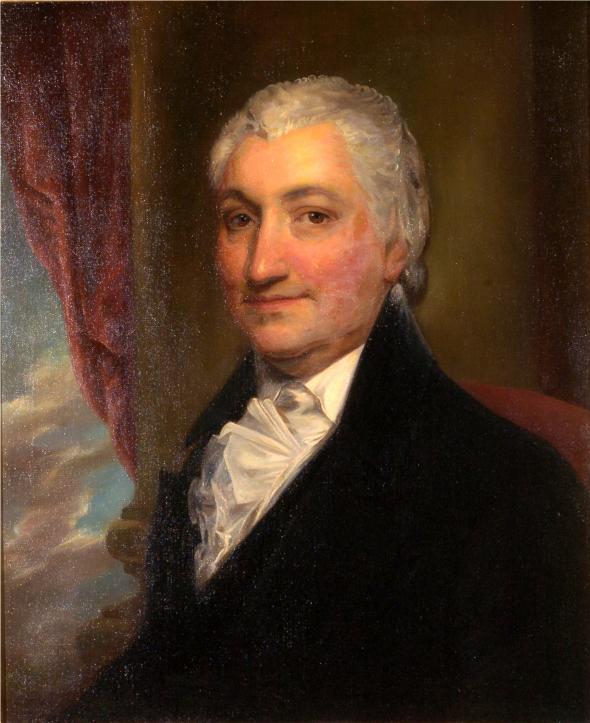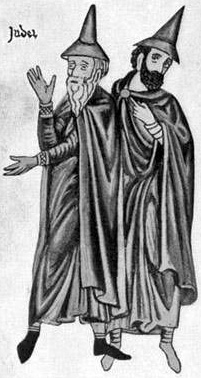|
New Synagogue (Wrocław)
The New Synagogue (; ) was a former Reform Judaism, Reform Judaism, Jewish congregation and synagogue, located in Breslau, Germany (now Wrocław, Poland). It was one of the largest synagogues in the German Empire and a centre of Reform Judaism in Breslau. Designed by Edwin Oppler in the Romanesque Revival architecture, Romanesque Revival style and completed in 1872, the synagogue was destroyed during the ''Kristallnacht'' pogrom which swept across Nazi Germany on 9–10 November 1938. History At the time of the synagogue's construction, Breslau had a Jewish population of 20,000, with only Berlin and Hamburg larger in size. Manuel Joël, who had become the rabbi for the Reform Jewish community in 1863, was the first rabbi to head the community in the new building. He died in 1890, and was followed by Jakob Guttmann (rabbi), Jacob Guttman, who served until his death in 1919. Dr. :de:Hermann Vogelstein, Hermann Vogelstein became the rabbi in 1920. On November 4, 1938, there was ... [...More Info...] [...Related Items...] OR: [Wikipedia] [Google] [Baidu] |
Reform Judaism
Reform Judaism, also known as Liberal Judaism or Progressive Judaism, is a major Jewish religious movements, Jewish denomination that emphasizes the evolving nature of Judaism, the superiority of its Jewish ethics, ethical aspects to its ceremonial ones, and belief in a continuous revelation which is closely intertwined with human reason and not limited to the Theophany at Mount Sinai (Bible), Mount Sinai. A highly Religious liberalism, liberal strand of Judaism, it is characterized by little stress on ritual and personal observance, regarding Jewish law as non-binding and the individual Jew as autonomous, and by a great openness to external influences and Progressivism, progressive values. The origins of Reform Judaism lie in German Confederation, mid-19th-century Germany, where Rabbi Abraham Geiger and his associates formulated its early principles, attempting to harmonize Jewish tradition with modern sensibilities in the age of Jewish emancipation, emancipation. Brought to Am ... [...More Info...] [...Related Items...] OR: [Wikipedia] [Google] [Baidu] |
Manuel Joël
Manuel Joël (or ''Joel''; October 19, 1826 – November 3, 1890) was a German Jewish philosopher and preacher. Biography Manuel Joël was born in Birnbaum (Międzychód), Grand Duchy of Posen. His older brother was the rabbi and scholar David Joël. After teaching for several years at the Breslau rabbinical seminary, founded by Zecharias Frankel, in 1863 he became the successor of Abraham Geiger in the rabbinate of Breslau. He made important contributions to the history of the school of Aqiba as well as to the history of Jewish philosophy, his essays on Ibn Gabirol and Maimonides being of permanent worth. But his most influential work was connected with the relations between Jewish philosophy and the medieval scholasticism. He showed how Albertus Magnus derived some of his ideas from Maimonides and how Spinoza was indebted to the same writer, as well as to Hasdai Crescas. These essays were collected in two volumes of ''Beiträge zur Geschichte der Philosophie'' (1876), while ... [...More Info...] [...Related Items...] OR: [Wikipedia] [Google] [Baidu] |
Buildings And Structures Demolished In 1938
A building or edifice is an enclosed structure with a roof, walls and windows, usually standing permanently in one place, such as a house or factory. Buildings come in a variety of sizes, shapes, and functions, and have been adapted throughout history for numerous factors, from building materials available, to weather conditions, land prices, ground conditions, specific uses, prestige, and aesthetic reasons. To better understand the concept, see ''Nonbuilding structure'' for contrast. Buildings serve several societal needs – occupancy, primarily as shelter from weather, security, living space, privacy, to store belongings, and to comfortably live and work. A building as a shelter represents a physical separation of the human habitat (a place of comfort and safety) from the ''outside'' (a place that may be harsh and harmful at times). buildings have been objects or canvasses of much artistic expression. In recent years, interest in sustainable planning and building pract ... [...More Info...] [...Related Items...] OR: [Wikipedia] [Google] [Baidu] |
19th-century Synagogues In Poland
The 19th century began on 1 January 1801 (represented by the Roman numerals MDCCCI), and ended on 31 December 1900 (MCM). It was the 9th century of the 2nd millennium. It was characterized by vast social upheaval. Slavery was abolished in much of Europe and the Americas. The First Industrial Revolution, though it began in the late 18th century, expanded beyond its British homeland for the first time during the 19th century, particularly remaking the economies and societies of the Low Countries, France, the Rhineland, Northern Italy, and the Northeastern United States. A few decades later, the Second Industrial Revolution led to ever more massive urbanization and much higher levels of productivity, profit, and prosperity, a pattern that continued into the 20th century. The Catholic Church, in response to the growing influence and power of modernism, secularism and materialism, formed the First Vatican Council in the late 19th century to deal with such problems and confirm cer ... [...More Info...] [...Related Items...] OR: [Wikipedia] [Google] [Baidu] |
1938 Disestablishments In Germany
Events January * January 1 – state-owned enterprise, State-owned railway networks are created by merger, in France (SNCF) and the Netherlands (Nederlandse Spoorwegen – NS). * January 20 – King Farouk of Egypt marries Safinaz Zulficar, who becomes Farida of Egypt, Queen Farida, in Cairo. * January 27 – The Honeymoon Bridge (Niagara Falls), Honeymoon Bridge at Niagara Falls, New York, collapses as a result of an ice jam. February * February 4 ** Adolf Hitler abolishes the War Ministry and creates the Oberkommando der Wehrmacht (High Command of the Armed Forces), giving him direct control of the German military. In addition, he dismisses political and military leaders considered unsympathetic to his philosophy or policies. General Werner von Fritsch is forced to resign as Commander of Chief of the German Army following accusations of homosexuality, and replaced by General Walther von Brauchitsch. Foreign Minister Baron Konstantin von Neurath is dismi ... [...More Info...] [...Related Items...] OR: [Wikipedia] [Google] [Baidu] |
University Of Pittsburgh
The University of Pittsburgh (Pitt) is a Commonwealth System of Higher Education, state-related research university in Pittsburgh, Pennsylvania, United States. The university is composed of seventeen undergraduate and graduate schools and colleges at its Urban university, urban Pittsburgh campus, home to the university's central administration and around 28,000 undergraduate and graduate students. The 132-acre Pittsburgh campus includes various historic buildings that are part of the Schenley Farms Historic District, most notably its 42-story Gothic Revival architecture, Gothic revival centerpiece, the Cathedral of Learning. Pitt is a member of the Association of American Universities and is Carnegie Classification of Institutions of Higher Education, classified among "R1: Doctoral Universities – Very high research activity". Pitt traces its roots to the Pittsburgh Academy founded by Hugh Henry Brackenridge in 1787. While the city was still on the History of Pittsburgh#Gatewa ... [...More Info...] [...Related Items...] OR: [Wikipedia] [Google] [Baidu] |
Synagogues In Poland
Before the Nazi German invasion of Poland in 1939, almost every Polish town had a synagogue or a Jewish house of prayer of some kind. The 1939 statistics recorded the total of 1,415 Jewish communities in the country just before the outbreak of war, each composed of at least 100 members (Gruber, 1995). Every one of them owned at least one synagogue and a Jewish cemetery nearby. Approximately 9.8% of all believers in Poland were Jewish (according to 1931 census). The list of actives synagogues in Poland cannot possibly include the hundreds of synagogue buildings which still stand today in about 250 cities and towns across the country – seventy years after the Holocaust in Poland which claimed the lives of over 90% of Polish Jewry. Devoid of their original hosts, many synagogue buildings house libraries and smaller museums as in Kraków, Łańcut, Włodawa, Tykocin, Zamość, Radzanów, but many more serve as apartment buildings, shops, gyms and whatever else community needs req ... [...More Info...] [...Related Items...] OR: [Wikipedia] [Google] [Baidu] |
History Of The Jews In Poland
The history of the Jews in Poland dates back at least 1,000 years. For centuries, Poland was home to the largest and most significant Jews, Jewish community in the world. Poland was a principal center of Jewish culture, because of the long period of statutory toleration, religious tolerance and Qahal, social autonomy which ended after the Partitions of Poland in the 18th century. During World War II there was a nearly complete genocide, genocidal destruction of the Polish Jewish community by Nazi Germany and its collaborators of various nationalities, during the German occupation of Poland between 1939 and 1945, called the Holocaust. Since the fall of communism in Poland, there has been a renewed interest in Jewish culture, featuring an annual Jewish Culture Festival, new study programs at Polish secondary schools and universities, and the opening of Warsaw's Museum of the History of Polish Jews. From the founding of the Kingdom of Poland (1025–1385), Kingdom of Poland in 10 ... [...More Info...] [...Related Items...] OR: [Wikipedia] [Google] [Baidu] |
History Of The Jews In Germany
The history of the Jews in Germany goes back at least to the year 321 CE, and continued through the Early Middle Ages (5th to 10th centuries CE) and High Middle Ages (c. 1000–1299 CE) when Jewish immigrants founded the Ashkenazi Jewish community. The community survived under Charlemagne, but suffered during the Crusades. Accusations of well poisoning during the Black Death (1346–1353) led to mass slaughter of German Jews, while others fled in large numbers to Poland. The Jewish communities of the cities of Mainz, Speyer and Worms became the center of Jewish life during medieval times. "This was a golden age as area bishops protected the Jews, resulting in increased trade and prosperity." The First Crusade began an era of persecution of Jews in Germany. Entire communities, like those of Trier, Worms, Mainz and Cologne, were slaughtered. The Hussite Wars became the signal for renewed persecution of Jews. The end of the 15th century was a period of religious hatred that ascr ... [...More Info...] [...Related Items...] OR: [Wikipedia] [Google] [Baidu] |








